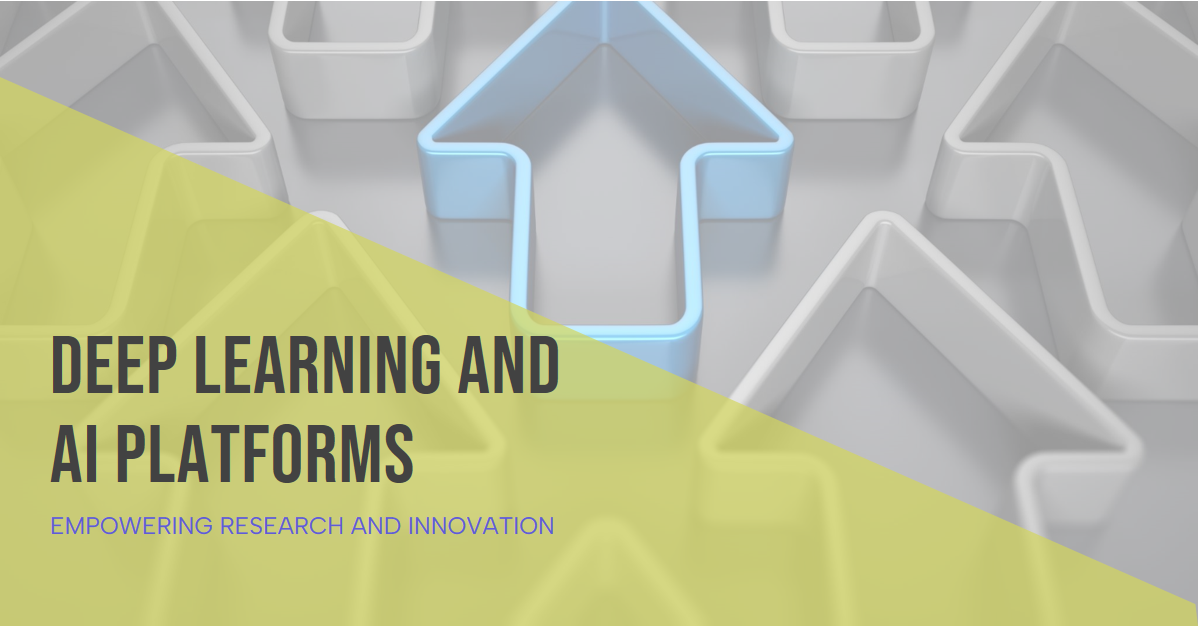With a focus on the present landscape, we highlight the platforms that have emerged as go-to choices for researchers, fostering collaboration, scalability, and technical expertise. Transcending boundaries, these platforms hold immense potential for groundbreaking innovations in diverse domains.
Deep learning, a subset of AI, revolves around the analysis and interpretation of digital images and videos, commonly known as computer vision (CompVis). The fundamental goal of CompVis is to teach computers to understand and process visual information akin to human abilities. This technology finds extensive applications across various sectors, including but not limited to:
- Industry: Automation of inspection processes, fault detection, object recognition, and classification.
- Medicine: Diagnostic imaging, X-ray analysis, MRI, and CT scans.
- Security: Facial recognition, surveillance, object detection in videos.
- Agriculture: Crop identification, plant health monitoring, and animal husbandry.
- Transportation: Autonomous vehicles, traffic safety, and monitoring.
- Robotics: Object recognition and manipulation, navigation, and 3D reconstruction.
#ibm #Google #Amazon #Microsoft #openai #meta #compvi
Deep Learning Techniques in Computer Vision
To analyze images and videos effectively, CompVis harnesses a range of techniques, including:
- Image Processing: Preprocessing of images, noise reduction, edge detection, and segmentation.
- Pattern Recognition: Identifying objects and features within images.
- Machine Learning: Object classification, event prediction, and scene analysis.
- Deep Learning: Complex pattern recognition, semantic segmentation, and 3D object detection.
Leading AI Platforms for Research and Development
Numerous platforms have emerged as powerhouses for deep learning and AI research, aligning with specific needs and objectives. Let us delve into some notable platforms embraced by tech giants:
- TensorFlow: Developed by Google, TensorFlow is an open-source platform for machine learning and deep learning. It offers a comprehensive ecosystem that allows efficient model training and deployment.
- PyTorch: Created by Facebook, PyTorch is an open-source deep learning platform. It is renowned for its dynamic computational graph and user-friendly interface, empowering researchers to experiment with complex models.
- Microsoft Azure Machine Learning (Azure ML): Azure ML is a cloud-based platform provided by Microsoft, facilitating scalable resources for machine learning and deep learning experiments. It offers a range of tools and services to streamline the research process.
- Keras: As a high-level API, Keras acts as an abstraction layer for deep learning models and runs seamlessly on both TensorFlow and PyTorch. Known for its simplicity and ease of use, Keras aids in rapid prototyping and experimentation.
- Amazon Web Services (AWS) Machine Learning: AWS provides a comprehensive cloud platform for machine learning and deep learning workflows. Its scalable infrastructure and rich set of services make it a popular choice among researchers.
- IBM Watson: IBM Watson is a robust AI platform that offers a suite of tools and services for advanced analytics, machine learning, and deep learning. It empowers researchers to develop and deploy AI applications efficiently.
OpenAI: Pioneering the Future of Deep Learning
OpenAI, a prominent player in the AI landscape, utilizes multiple platforms to train and deploy their state-of-the-art models. They leverage both internal infrastructure and external resources, including:
- Own Datacenters: OpenAI operates its own datacenters equipped with powerful GPUs and TPUs to train their GPT models efficiently.
- Cloud Platforms: OpenAI harnesses the computational power of leading cloud platforms such as Google Cloud and Microsoft Azure to supplement their training capabilities.
- Deployment Platforms:
- OpenAI provides an API that enables developers to access their GPT models effortlessly, fostering integration into various applications.
- The OpenAI Playground is a web-based environment designed for developers to experiment with GPT models, facilitating rapid prototyping.
Companies today operate in an environment where regulatory requirements are not only complex, but also constantly evolving.
Conclusion
Deep learning and AI platforms have become indispensable tools for researchers aiming to push the boundaries of innovation. With platforms like TensorFlow, PyTorch, Azure ML, Keras, AWS, and IBM Watson, researchers have access to robust ecosystems that provide the necessary infrastructure, tools, and resources. OpenAI’s contributions have further expanded the capabilities of deep learning, making their models accessible through APIs and user-friendly playgrounds. By selecting the most suitable platform based on research requirements, researchers can effectively contribute to the advancement of deep learning and AI, shaping a future that holds immense potential for transforming various domains.
For further information on the platforms utilized by OpenAI GPT, please refer to the following links:
– OpenAI API
– OpenAI Platform
– OpenAI Blog
To explore more about computer vision and its applications, refer to the Wikipedia article on Computer Vision.
Dipl.-Ing. Hari Maslic
www.meriscon.com
